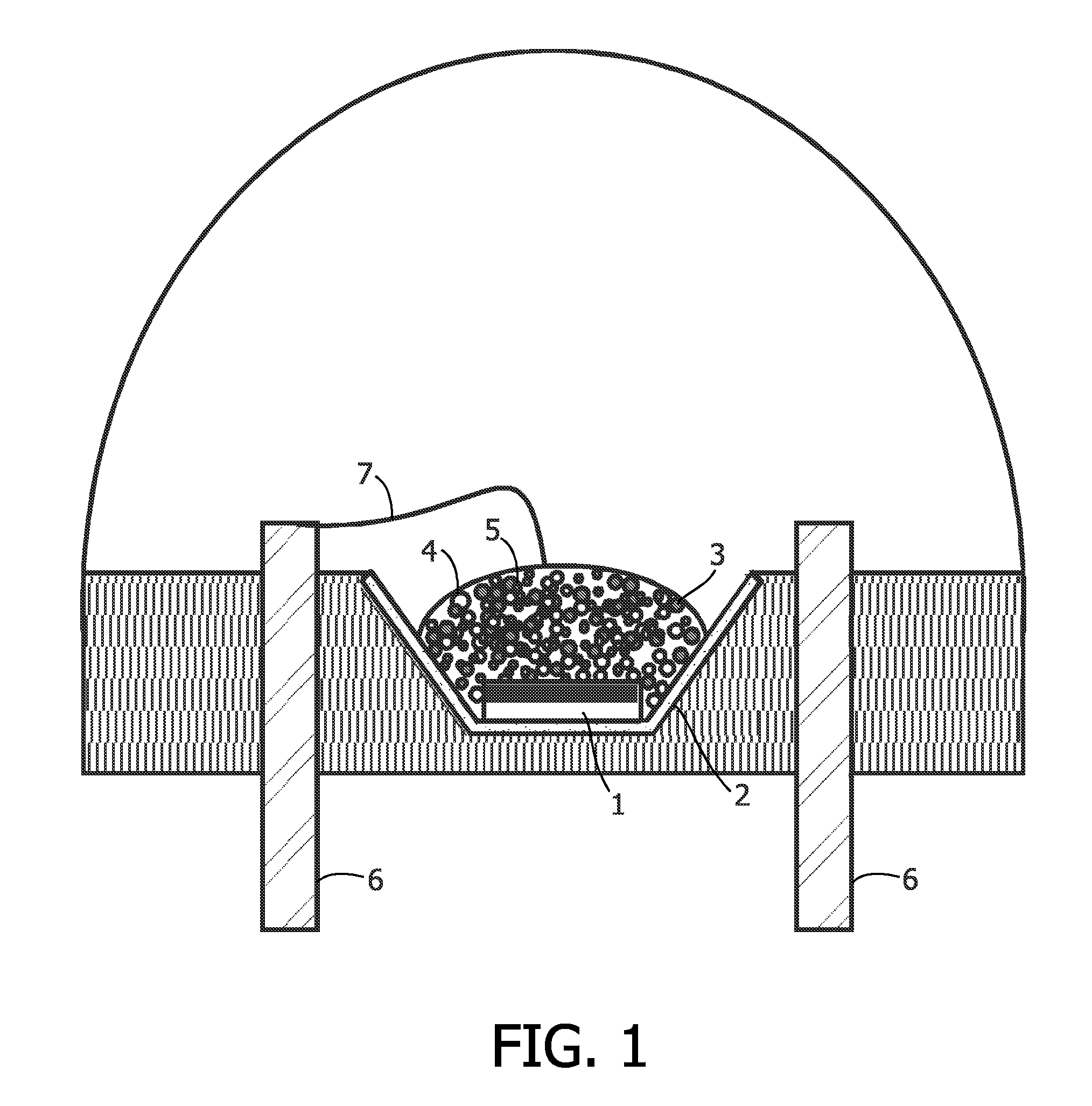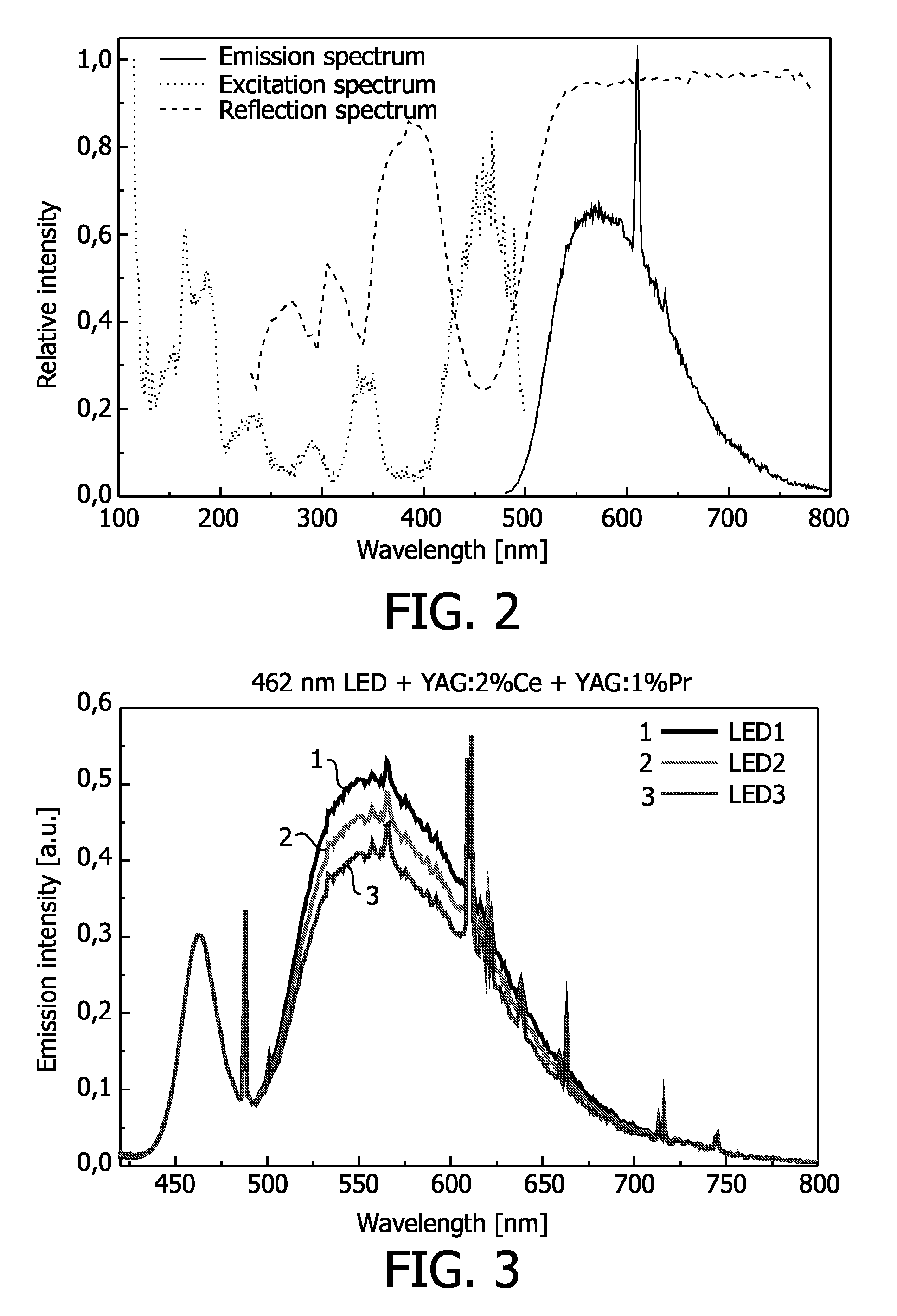Illumination system comprising color deficiency compensating luminescent material
a luminescent material and color deficiency technology, applied in the direction of discharge tube/lamp details, discharge tube luminescnet screens, lighting and heating apparatus, etc., can solve the problem of unnatural pinkish light, limitation of such phosphor-convertible light-emitting devices, and inability to generate white light of the desired tone, etc. problem, to achieve the effect of improving color rendering and low color temperatur
- Summary
- Abstract
- Description
- Claims
- Application Information
AI Technical Summary
Benefits of technology
Problems solved by technology
Method used
Image
Examples
specific embodiments
1. White LED Comprising YAG:2% Ce and YAG:1% Pr
[0073]A phosphor blend of 70 to 80% YAG:2% Ce and 20 to 30% YAG: 1% Pr was suspended in a silicone precursor, a polymerization catalyst was added, and a droplet of this suspension was deposited onto the LED die, based on a 460 nm emitting InGaN. A plastic cap sealed the LED and the silicone was polymerized within about an hour. The spectra of LEDs with three different coating thicknesses are depicted in FIG. 3.
2. White LED Comprising (Y,Gd)AG:2% Ce and (Y,Gd)AG:1% Pr
[0074]A phosphor blend of 70 to 80% (Y,Gd)AG:2% Ce and 20 to 30% (Y,Gd)AG:1% Pr was suspended in a silicone precursor, a polymerization catalyst was added, and a droplet of this suspension was deposited onto the LED die, based on a 460 nm emitting InGaN. A plastic cap sealed the LED and the silicone was polymerized within about an hour. The spectra of LEDs with two different coating thicknesses are depicted in FIG. 4.
[0075]According to a further aspect of the invention, in a...
PUM
 Login to View More
Login to View More Abstract
Description
Claims
Application Information
 Login to View More
Login to View More - R&D
- Intellectual Property
- Life Sciences
- Materials
- Tech Scout
- Unparalleled Data Quality
- Higher Quality Content
- 60% Fewer Hallucinations
Browse by: Latest US Patents, China's latest patents, Technical Efficacy Thesaurus, Application Domain, Technology Topic, Popular Technical Reports.
© 2025 PatSnap. All rights reserved.Legal|Privacy policy|Modern Slavery Act Transparency Statement|Sitemap|About US| Contact US: help@patsnap.com



